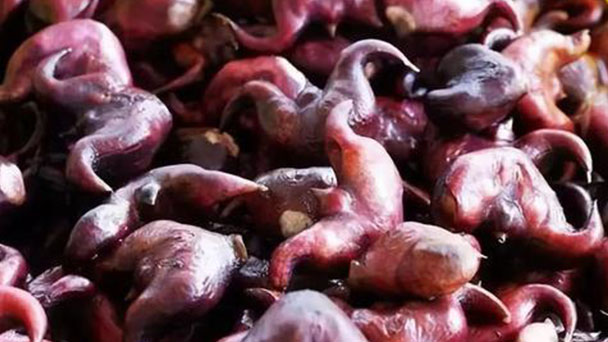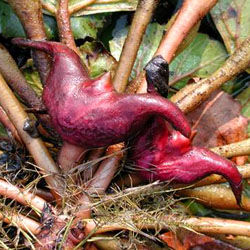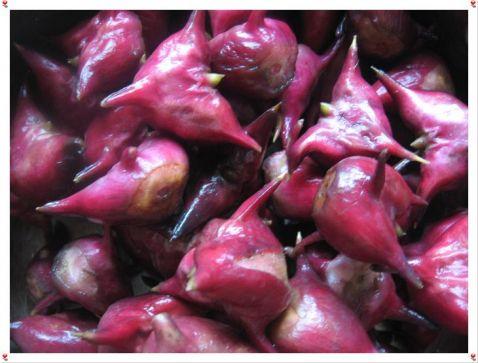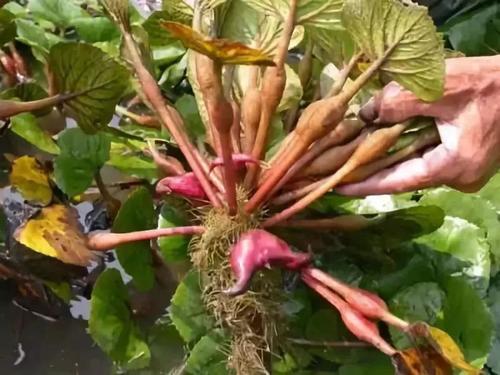How to grow Water Chestnut
Written by Maggie
Dec 19 2020

Water Chestnut is common in daily life and is popular among many people due to its rich nutritional value. And Water Chestnut, made of great quantities of starch, is made into Chestnut, which is to be eaten as a staple food and now made in many places in the south of China. How to grow Water Chestnut? Let’s read the details together.

How to grow Water Chestnut
1. When to grow Water Chestnut
Water Chestnut sowing time on the middle and lower reaches of the Yangtze River is from late March to early April. Early maturing varieties will be harvested in the first and middle of July and from late September to early October.
2. Selection of seedling fields
It is appropriate to choose a field that is sheltered from the wind and facing the sun, with fertile soil, water depth of 10-50cm, and convenient for drainage and irrigation. The duckweed and water sponge in the surface of the field should be cleaned before Water Chestnut seedling raising, and the canopy should be used for seedling raising and planting in advance.
3. Water Chestnut sowing method
In the Yangtze River area, from Vernal Equinox to Tomb Sweeping Day, take shelter from the wind, shallow water level, fertile soil, irrigation and drainage convenient pond as a seedling pond. According to the row spacing 1 meter square seeding, per acre of seed 65-90 kg, it can be used for 8-10 acre of long pond.
4. Transplanting Water Chestnut
The seedlings were planted on the same day, with 1.5-2 meters of row spacing in shallow water and 1.5-2 meters of hole spacing, about 2-3 plants in a bunch of diamond seedlings per hole, 2.5-3 meters of row spacing in deep water and 2-2.5 meters of hole spacing, about 8-10 plants in a bunch of diamond seedlings per hole.
5, Reasonable fertilization for Water Chestnut
Water Chestnut needs a more concentrated amount of fertilizer. Before planting acre, we can apply pig manure or rotting mud dung 2000 kg. After germination acre apply 5 kg urea for quick effect fertilizer. After flowering 2-3 times combined with disease prevention and insect control with a strong increase in production of 2-3 packs or 2% potassium dihydrogen phosphate leaf spraying.
6. Timely weeding Water Chestnut
There are many kinds of aquatic weeds, such as board ping grass, centipede grass, moss grass. There must be timely artificial clearance, otherwise it will affect the Water Chestnut photosynthesis. Generally every 10 days after the removal of weeds, until Water Chestnut sealed Water.

7. Ripe Water Chestnut in time
Ripe twenty to thirty days after flowering, for vegetables or raw meat in sepals off, the peel has not fully sclerosis when harvested. Cooked, eaten, processing or seed retention must be fully ripe. Ripe early maturing varieties every five days, late maturing varieties picked once every seven days.
8 Water Chestnut pest prevention and control
Water Chestnut common insect pests: aphids, leafhoppers, etc.. Trichlorfon or trichlorfon killing water spray can be used for prevention and control at the initial stage of the hazard. The most common diseases are water chestnut plague, which can be controlled by jinggangmycin plus carbendazim mixed with water spray in the early stage.
How are the Water Chestnut seeds preserved
1. The selection has the inherent characteristics of this variety, regular and tidy shape, dark skin color, no diseases and insect pests, thin skin shell and thick flesh, filling full old ripe, placed in the water to remove floating fruit, leaving heavy fruit for planting.
2. Generally, the loss in storage during overwintering is about 30%. In order to meet the seed consumption of a certain sowing area, the loss should be estimated to retain the seed of podocarpus. Water chestnuts are not dry. It is appropriate to store in water, with woven bags, with rope fixed in a field with a hot spring submerged in water for winter. Keep the field water flowing and keep the water chestnut species from freezing. Wait until the next spring to scoop up and wash and sow.

Latest Updated
- Benefits of Bugleweed - 7 Science-backed Health Benefits
- Bugleweed Dangers & Side Effects - Is It Poisonous?
- How to Plant Evergreen Trees - What You Should Know
- When to Plant Evergreens - Grow Guide for Evergreen Trees
- 12 Wonderful Evergreen Shrubs for Your Garden
- 12 Popular Evergreen Plants with Pictures for Beginners
- When And How To Prune A Lilac Bush Like a Pro
- How to Grow & Care for Lilac Vine (Hardenbergia Violacea)
- Japanese Lilac Tree (Syringa Reticulata) Care & Propagation Guide
- Shumard Oak Pros and Cons - What to Know
Popular Articles
- Winter maintenance of Antirrhinum Majus
- How to Grow Terminalia Mantaly Tree
- How to Grow and Care for Crossostephium Chinense
- How to grow Antirrhinum Majus in spring
- Peristeria Elata (Dove Orchid) Profile: Info & Care Guide
- Underwatered Snake Plant (Sansevieria Trifasciata) - Signs And How To Fix
- How to Care for Brazilian Jasmine Plant (Mandevilla Sanderi)
- How to Grow & Care for Graptopetalum Purple Delight in Summer
- Rosa Chinensis (China Rose): Plant Growing & Care Tips
- How to Care for Baby Sun Rose (Aptenia Cordifolia)